This is probably the most useful hitch in the book, and one of the simplest too. It is used to secure the end of a rope to a strong point. Its strength is in the round turn (the two wraps around what it is tied to) and the two half hitches are there to keep it in place.
Of all the hitches this one probably holds best on an irregularly shaped object.
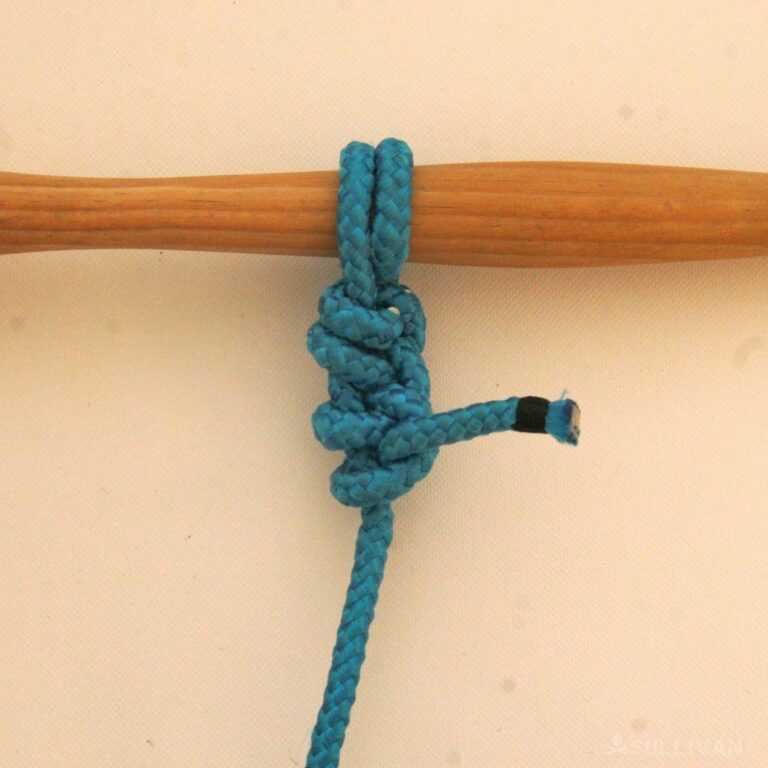
This knot can be tied and untied under tension because the hitches are never loaded (the load is always along the line, whereas the hitches go across it) and once they have been taken off the round turn will slip off easily.
This makes it referable to all loop knots, and to many other hitches for tying up loaded lines quickly (like the end of a pulley line while under load, or a mooring line for a boat).
Step 1. Make a turn around the strong point:
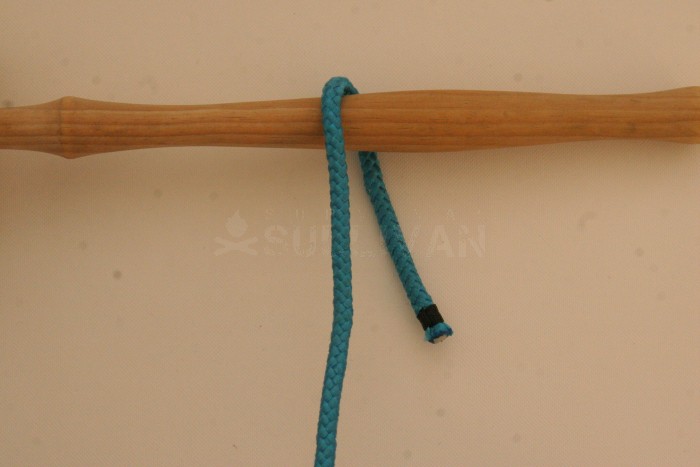
Step 2. Make another turn, making the two into one ‘round turn’:
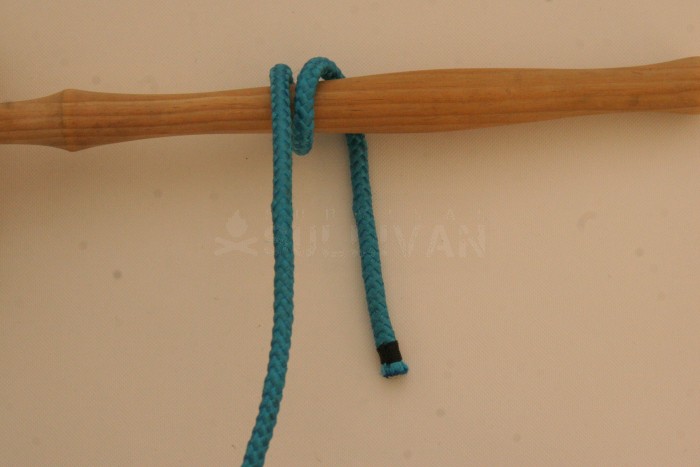
Step 3. Cross the working end over the standing part.
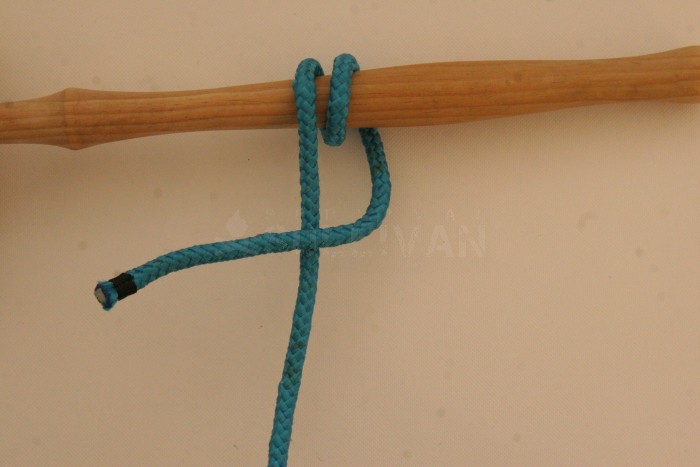
Step 4. Cross the working end back under the standing part, closer to the strong point, and then back over itself:
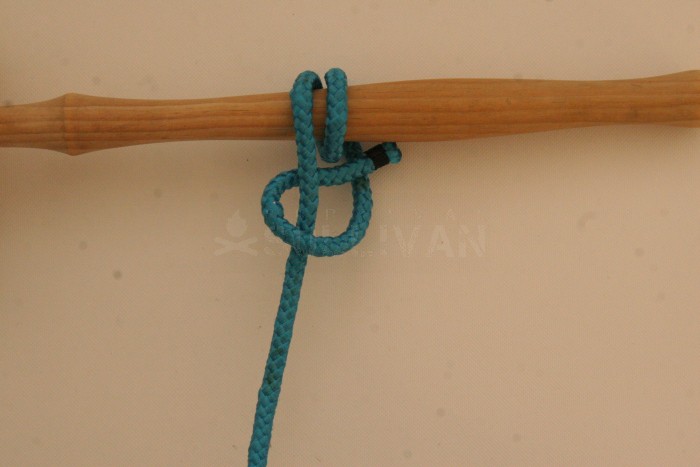
Step 5. This makes your first half hitch. Tighten this up by pulling on the working end:
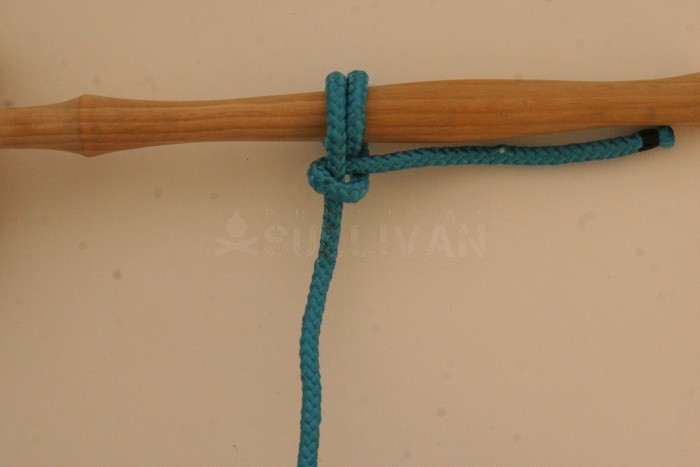
Step 6. Again, pass the working end over the standing part:
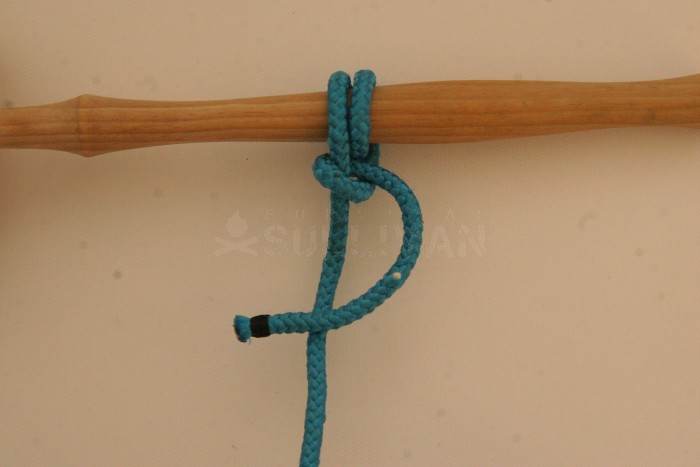
Step 7. And again, under the standing part and over itself, producing a second half hitch. Tighten this up too:
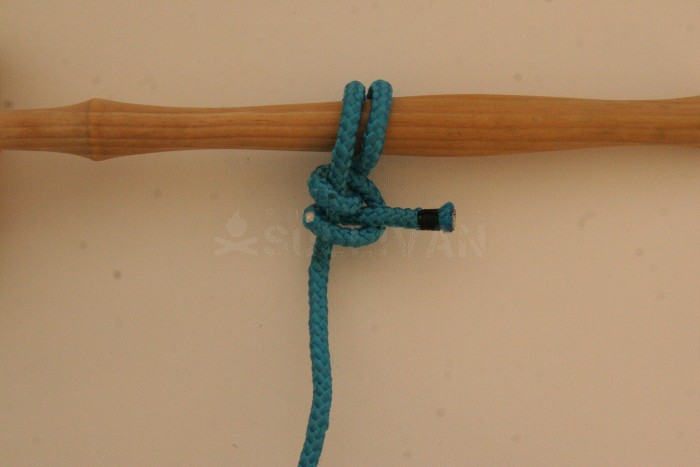
Final step. More hitches can be added for extra security, but beyond two each successive hitch adds very little strength. However, they can be very useful for keeping excess line out of the way. This is the end result:

Related Knots
- The round Turn is often replaced with a Munter Hitch (AKA an Italian Hitch) to make a Hi-Line Knot. The usefulness of this is debatable however – the idea is that the nipping turn in the Munter will add security, but it may actually make the line so much weaker as to not be worth it.
- The Tensionless Hitch is a ‘knot’ made of many round turns, using only friction. This is useful because the knot is 100% ‘efficient’, meaning it retains 100% of the working load strength of the line it is tied in (unlike most knots, which can decrease the strength of the line by up to 80% in some cases)
- The Pile Hitch and Capstan Hitch are two variations on a principle which provide a similar holding strength and versatility to the Round Turn and Two Half Hitches, but without needing access to the ends. This makes them very quick to tie, even under tension.
Conclusion
The Round Turn and two half hitches in one of very few knots which people tend to remember straight away. This is a good thing, because it is also one of very few knots which will do well for a significant portion of the things you could ever need a knot for.
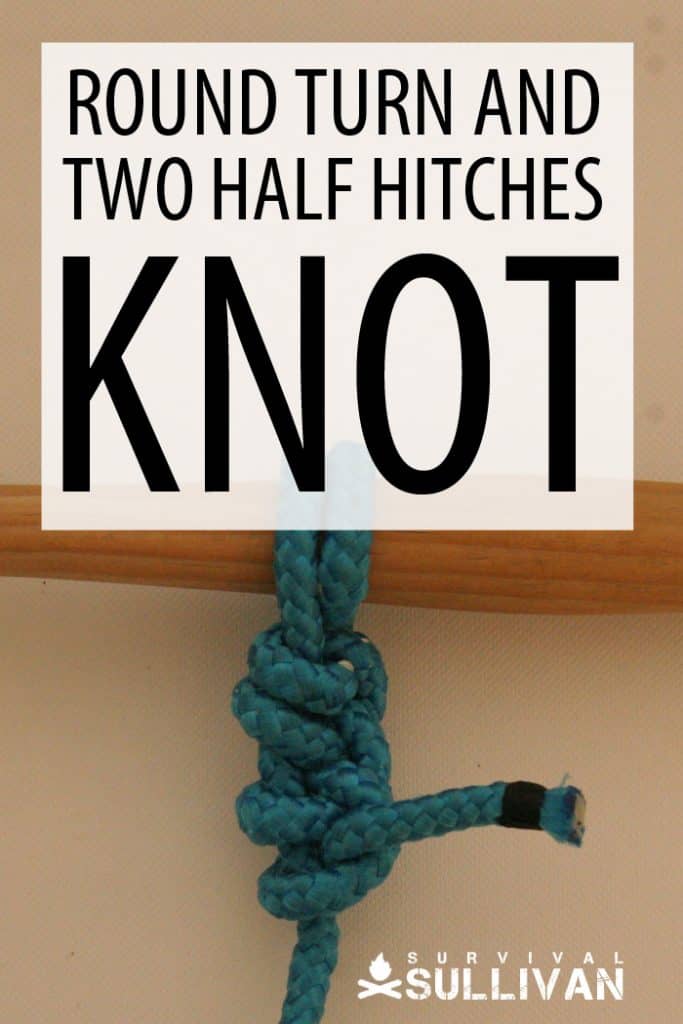
Nick O’Law has been exposed to survival from a very young age. In his teenage years, he learned A LOT about bushcrafting, such as making snares and traps, and even how to make DIY knives.
If you haven’t ye read and tried his knot-making articles on Survival Sullivan, you should definitely check them out.
